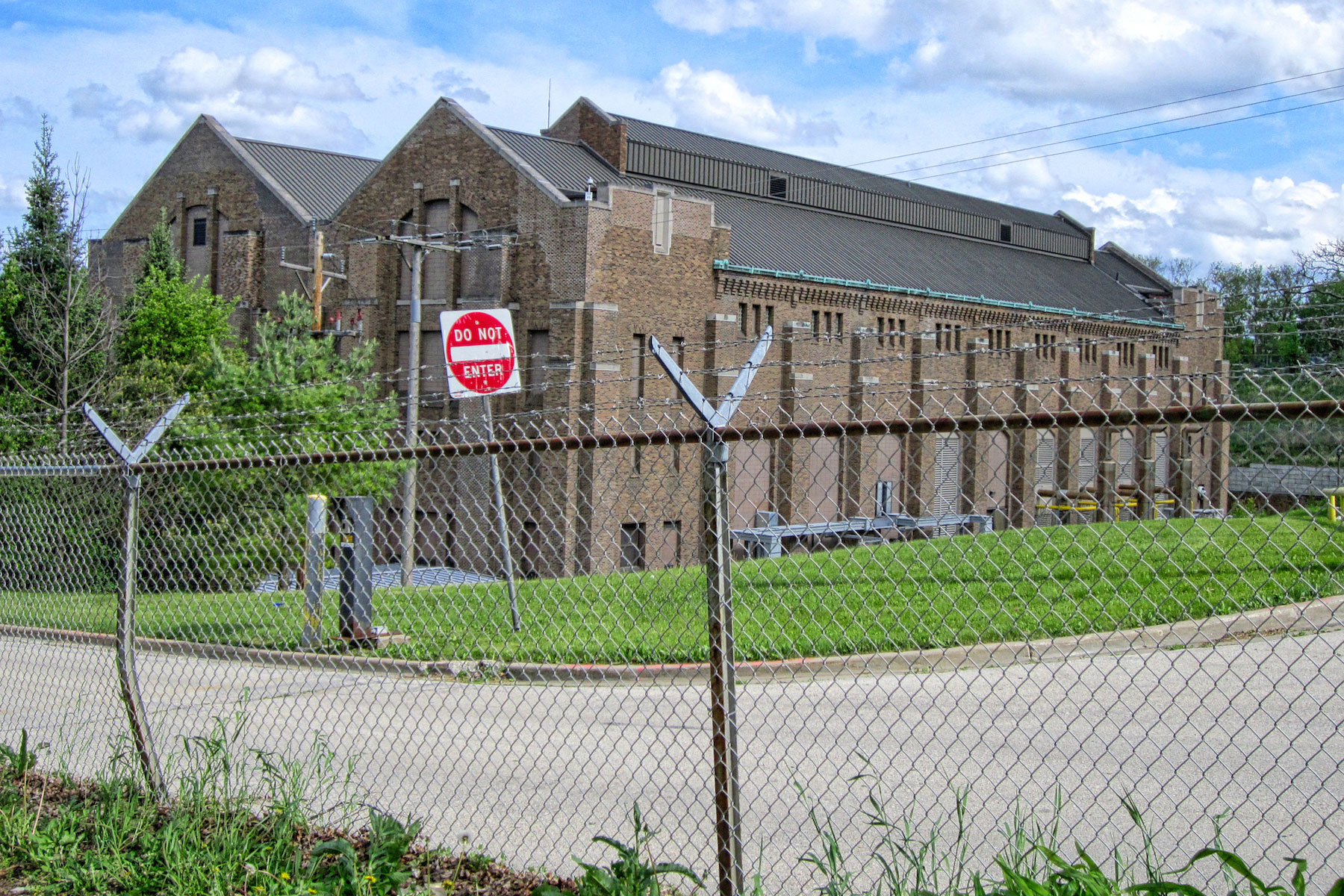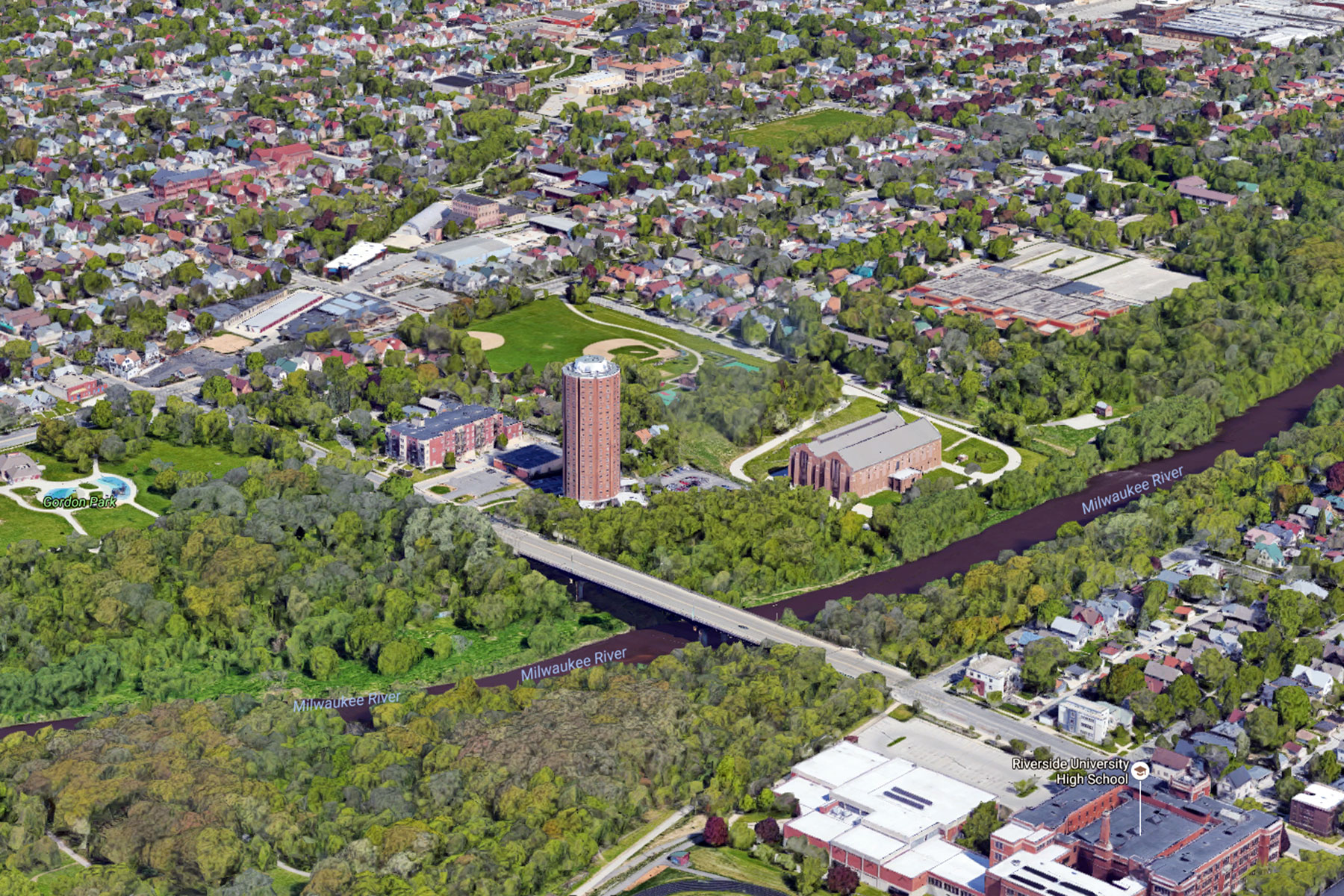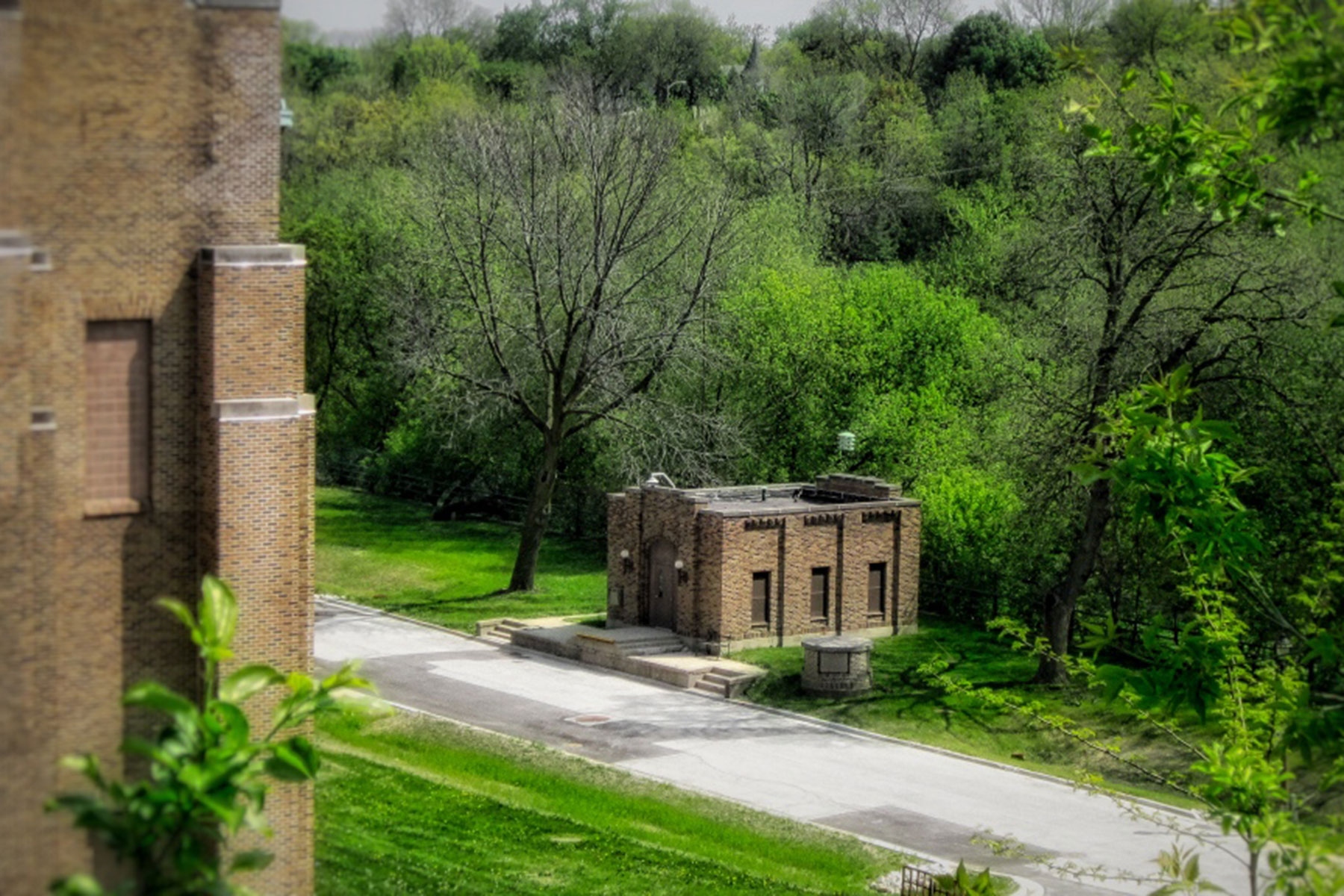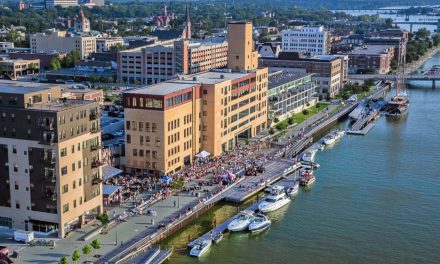
The massive brick structure on the bank of the Milwaukee River in Riverwest is part of the city’s water utility. When it entered service in 1924, its massive pumps set a world record.
On a stretch of the Milwaukee River once home to both ice houses and a lost neighborhood, only one structure remains – a five-story-tall, windowless brick building. Although well maintained and surrounded by neatly mown lawn, no sign identifies it and its purpose isn’t immediately obvious.
Here, at the foot of East Chambers Street in Riverwest, the city built a record-setting engineering landmark. This 92-year-old building is the Milwaukee Water Works Riverside Pumping Station.
Milwaukee′s water supply has been drawn from Lake Michigan since 1874. The North Point Pumping Station was built at the foot of North Avenue on the lake shore to pull water from a tunnel extending 2,100 feet out into the lake. In 1895, a second, longer intake was built, a project marred by an accident that claimed the lives of 14 tunnel workers. A decade later, an entirely new intake was under construction, 12-feet in diameter and stretching 6,553 feet into the lake.
Although the eight steam-powered pumps at the North Point Station could deliver 126 million gallons of drinking water each day, by 1918 it was clear the rapidly growing city needed a second major pumping station.
In 1921, work on the Riverside Pumping Station started with the construction of a floodwall, built two feet higher than the maximum recorded flood level. At the same time, a nine-foot-diameter, 7,000-foot-long tunnel was excavated from the lake front to the new station.
According to Elmer W. Becker′s A Century of Milwaukee Water, city engineers disagreed over the pumps to be installed in the new plant. Many favored centrifugal pumps, then a relatively new technology rapidly gaining favor.
Ultimately the decision was made to order somewhat old-fashioned but well-proven vertical triple expansion pumps. This decision, Becker believes, was influenced by the city’s favored machinery contractor, Allis-Chalmers.
Three of the gigantic pumps, powered by superheated steam supplied by three coal-fired boilers, were installed in the 59,000-square-foot brick structure.
On July 1, 1924, pump no. 1, with a daily capacity of 22 million gallons, went into service. The five-story-tall Allis-Chalmers machine was so perfectly balanced its 100-tons of moving parts operated in eerie silence, save only for the faint, rhythmic clicking of steam valves opening and closing.
Tests showed pump no. 1 generated 214.5 million pounds of work for every 1,000 pounds of steam it used, setting a new world record for pumping engine economy. Pump no. 2 was not far behind at 213.2 million pounds of work per 1,000 pounds of steam.
Milwaukee′s brand-new Riverside Pumping Station was second to none, and the city was happy to show it off. A visitor′s gallery was included in the station’s design, and a switch-back sidewalk led down the 90-foot-tall river bluff from Pumping Station Park. In addition to the gigantic boilers and pumps, visitors could see offices, steam-powered generators for the in-house electrical system, automated coal- and ash-handling equipment, and a state-of-the-art machine shop.
A fourth pump, rated at 25 million gallons per day, was added in 1927, along with three additional boilers. The following year, a 40 million gallon per day steam turbine centrifugal pump entered service, and the city announced it had all the capacity it needed to meet demand for the foreseeable future.
The “foreseeable future,” Becker noted, proved to be just three years, because that′s when the city ordered a sixth pump, a centrifugal type delivering 60 million gallons daily. This gave Riverside Station a daily pumping capacity of 184 million gallons.
In 1937, Riverside Station narrowly escaped disaster. In that year, given the vast pumping capacity available at Riverside, the city felt safe shutting down North Point Station for extensive reconstruction.
On Sunday, February 21, 1937, after several days of heavy rain, the county dynamited ice on the Milwaukee River north of the city to prevent flooding. Huge ice chunks floating down the river backed up against the Locust Street bridge, forming a dam. Immediately water began spilling over the river banks, rising steadily higher against the station′s flood wall. Although the wall was two feet higher than the previously highest recorded flood, the river reached a point just two inches from overflowing the wall. If it topped the wall, the plant′s basement would flood, shutting down the only pumps supplying water to the entire city.
The situation was serious. Not only would a major city suddenly be without water for drinking or cooking or, well, flushing, there would be no water pressure in the fire hydrant system.
The utility rushed 1,000 sand bags to the station but they were not needed. Gradually, over the next few days, the river subsided.
Twelve years later, the station did flood. On the night of July 27, 1949, a torrential cloudburst sent a surge of storm water down the steep river bluff, bursting through the plant′s basement windows “like so many Niagara falls,” night shift workers told the Milwaukee Journal.
With nearly three feet of water in its boiler and pump rooms, the plant was out of commission. The Water Works needed powerful, mobile pumps to dry out the plant – and it knew where to find them. Nine fire engines were summoned and commenced pumping out the flooded building at a combined rate of more than 9,000 gallons a minute. The station was up and running six hours after the storm.
The five-story-tall steam pumps at Riverside Station served more than 40 years. In the mid-1960s, the water utility began a modernization project, removing the coal-fired boilers and steam-driven pumps and installing electric pumps operating off a dedicated high-voltage line. At a week-long open house in 1966, thousands of Milwaukeeans filed through the station for a last look at the big steam pumps before they were scrapped.
On August 23, 1968, the fires were dropped in last two operating boilers.
Today, Riverside Station contains nine electric pumps with a combined capacity of 240 million gallons a day. The pumps are remotely controlled by operators at the Linnwood Water Treatment Plant and the Howard Avenue Water Treatment Plant.
Although the facility is more than 90 years old, it is still a major part of the city’s water infrastructure and is frequently updated. In 2011, for example, the utility completed installation of three 2,500-kW diesel generators to supply backup power to the Riverside Pumping Station in the case of a power failure. According to Water Marketing Specialist Rosalind Rouse, this was part of a multi-year project to provide electric power generation for five critical infrastructure sites. Currently, the utility is in the midst of a project to replace the access road and improve flood protection at Riverside.
Carl Swanson, Milwaukee Notebook
Originally published on Milwaukee Notebook as Riverwest’s hidden landmark
















